23rd March 2012 - This remarkable model of an 18 foot Skiff was built by Dennis Kenna. We discussed this project with Dennis over a coffee about 12 months ago, and we are amazed at what he has produced. It is a faithful reproduction of an 18 footer that Dennis sailed in the 1970's - He had this to say about the project:
I sailed an 18 footer on Sydney Harbour for 5 years back in the mid to late 70's, I have always wanted to build a model with a crew and having had the plans of our last skiff, I decided to give it a go. The hull took me around 4 months to build, and then the painting and fitting out had to be done, and the sails made, so the whole project took around 15 months to complete.
-
The hull is a metre long, with a beam of 400mm and 490mm from wing tip to wing tip at the widest point.
-
The whole skiff is built out of marine ply and coated in fibreglass resin inside and out before painting.
-
The crew are all around 300 mm high and were recruited from the local second hand shop.
-
The mast is 1830 high and the boom is 630mm.
-
The sails were made by Steve Arthur, and what a fabulous job he did, they are fantastic.
-
The fittings were all purchased from you, thank you.
-
The centre board is 500mm long in the water with a kilos weight hanging off the bottom, and the rudder is 200mm in the water.
-
The rig is based on the intermediate or second rig we had in the boat, 18 footers all had three rigs small, medium and large for different wind conditions.
I have set the skiff up as a pond skiff after deciding that making her R/C would spoil the look on the inside with all the gear needed to make it R/C. It ended up being a good decision as she sails and looks a lot more realistic this way, and is a lot of fun also. I have been amazed at just how well she sails, no weather helm or lee helm at all, I just set the rudder and sails and off she goes and go she does, after all she is a skiff.
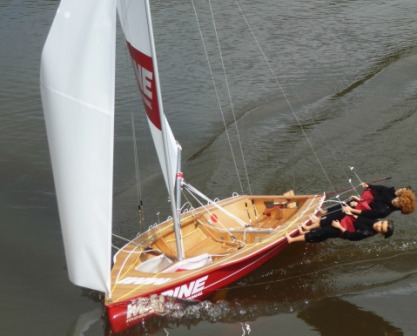
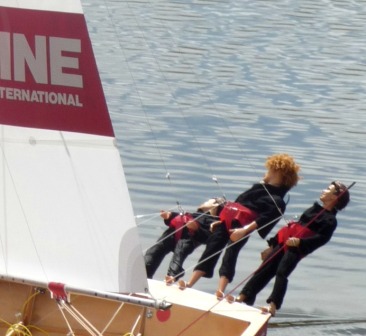
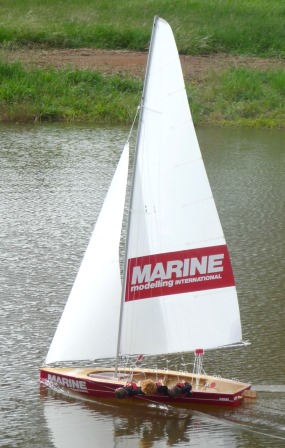
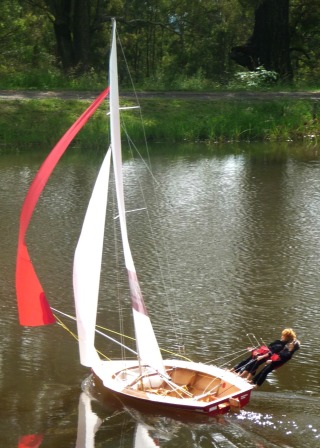
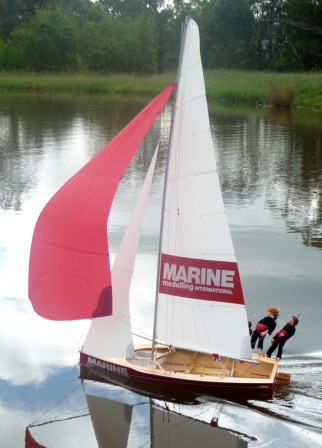
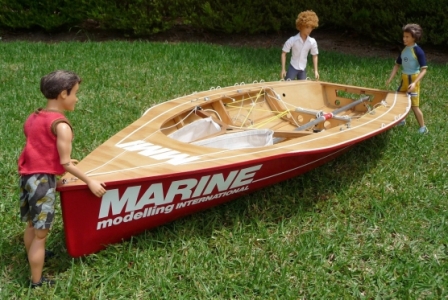
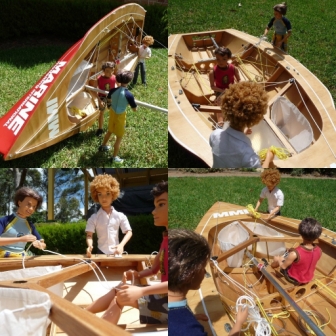
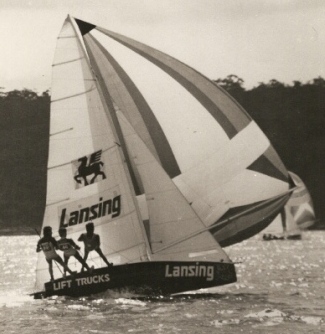
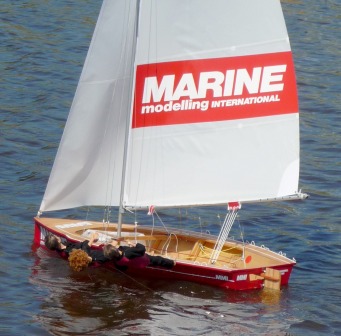 Dennis sailing an 18 footer in Sydney in the 1970"s Sevie, Woody & Howie having a blast today
Dennis sailing an 18 footer in Sydney in the 1970"s Sevie, Woody & Howie having a blast today
11th March 2012 - UPDATE - We visited the SE Queensland M Championships last weekend and were very impressed with the performance of the " Dreadnought" - Against some good competition, Dave Turton had 29 wins out of the 34 races sailed, I sailed the boat during the lunch break in a brisk breeze. I found the boat to be well balanced and it had good acceleration out of the tacks upwind and sliced through the chop downwind without burying or pushing a bow wave.
1st March 2012 - Below is Jeff Byerley's new Marblehead design, tentativeley called "Dreadnought" - The first boat has just been built for David Turton and will be competing in the SE Queensland Championships this weekend - Cassie and I will be attending this event and look forward to seeing it in action. - Jeff had this to say about the new design:
"The design is based on using the chine concept, using low wetted surface area, small volume,and a medium prismatic number to cope with most conditions. ( There is no boat designed that will be ideal in all!). The reverse bow is used to try and overcome the pitching that flares can produce. It is designed to use a swing A rig and pocket luffed conventional on the others. All unstayed.
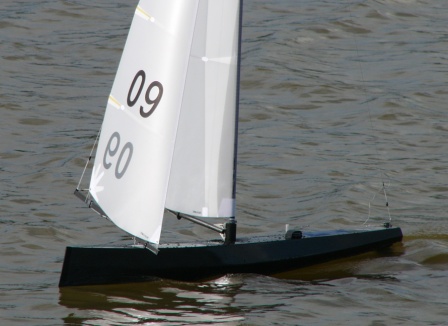
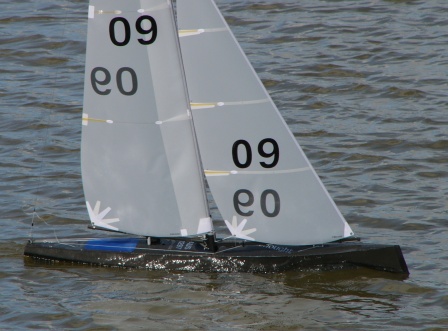
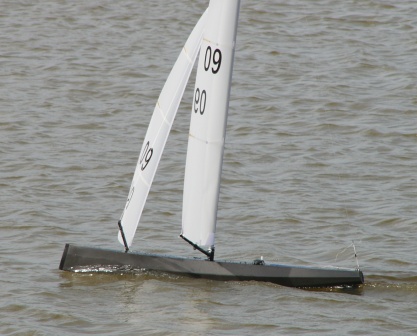
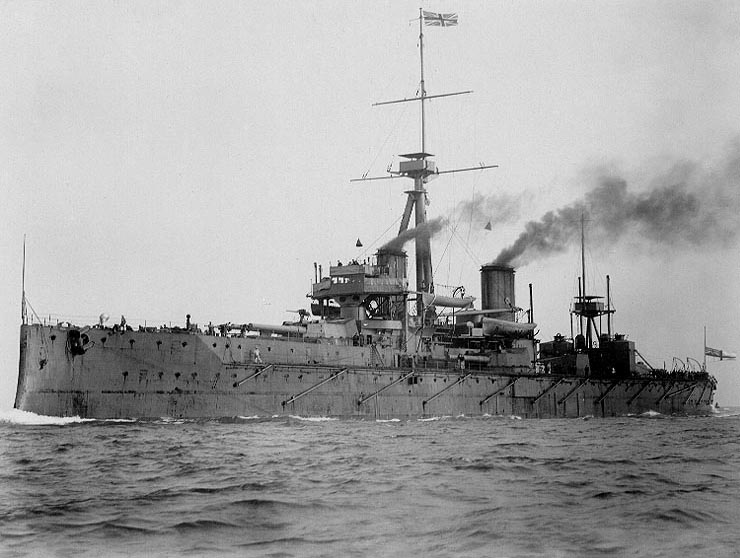 JB's DREADNOUGHT 2012 HMS DREADNOUGHT 1906
JB's DREADNOUGHT 2012 HMS DREADNOUGHT 1906
22nd February 2012 - FRAKTAL having it's first sail - note narrow beam and cheeks to increase bouyancy - GB happy with first outing, but may move fin back about 10mm to achieve optimum balance.
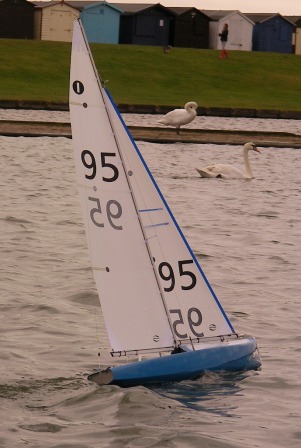
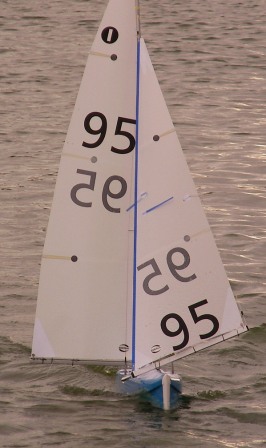
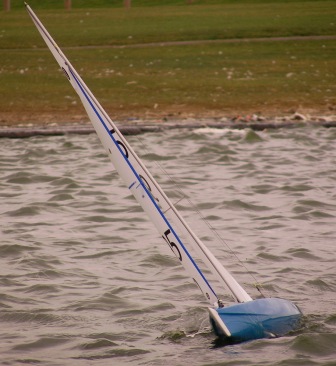
18th February 2012 - Here is the lastest IOM design from Graham Bantock. The design is called "FRAKTAL". It has its first sail today. The 2nd hull is being moulded now.
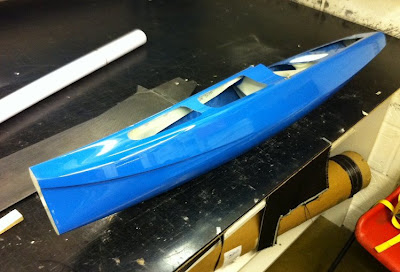
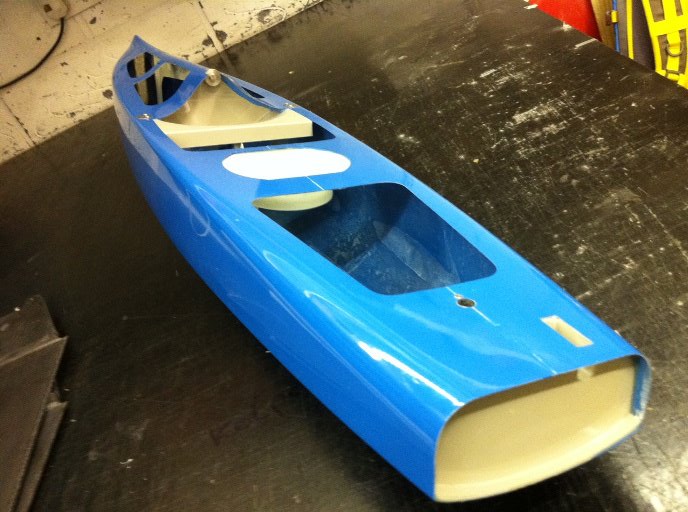
21st January 2012 - Our good friend Leigh Norman has an interesting and eclectic collection of model yachts and boats. Below are 2 interesting craft.
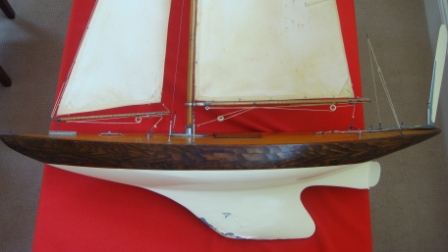
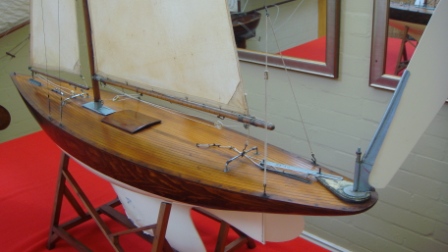 This is a planked Marblehead from 1949, named “Niad”.. Thought to have been made in Australia by Steve Daniels. The sweet lines of this yacht are reminicent of early Sparkman & Stephens designs - Note vane gear.
This is a planked Marblehead from 1949, named “Niad”.. Thought to have been made in Australia by Steve Daniels. The sweet lines of this yacht are reminicent of early Sparkman & Stephens designs - Note vane gear.
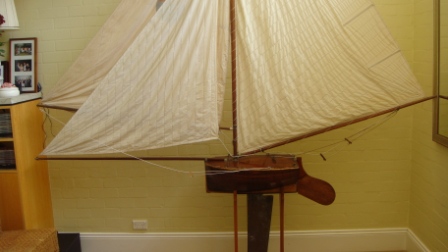
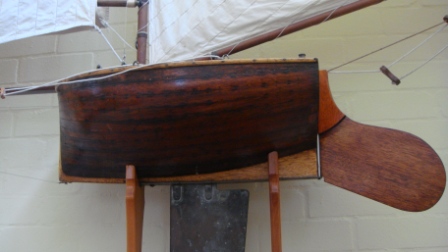
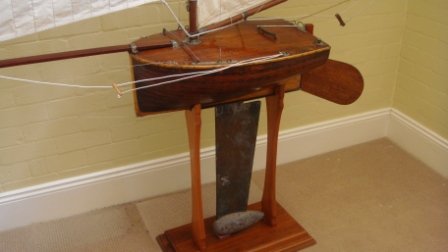
A two foot model which we think was made before the war by a maker who worked for Geo Towns who made rowing shells on Parramatta River. It is named ” MYRA “ which was an 18 footer raced on Sydney Harbour. These craft are usually made of Australian cedar and were hugely popular in Sydney with large numbers racing on Sydney Harbour, with lots of betting being conducted on the racing. A large course would be set on the harbour and men would persue them in rowing dinghies to the mark, then reset the sails and rudder for the next leg. Ferries full of punters would follow these amazingly over canvassed craft around the harbour.
Results 2012 Austalian National Championships held in Hobart (top 4 each class)
IOM - 1st Michael Grieve (Knuckles) - 2nd Craig Smith - 3rd Paul Jones - 4th Michael Hickman
Marblehead - 1st Lisa Blackwood - 2nd Denis McLoughlin - 3rd Michael Hickman - 4th Lincoln McDowall
10 Rater - 1st Lincoln McDowall - 2nd Graeme Howie - 3rd Jeff Byerley - 4th Andrew Reid
A Class - 1st Graeme Howie - 2nd Michael Hickman - 3rd Gary Cotterall - 4th John Cole Cook
15th January 2012 - Clive Udy has just purchased this old 36r vane sailer at an antique auction. The boat is in very good condition including the original varnished terylene sails, the rotating mast mechanism and it features a bluff bow. The design was called a Jemima Duck. We have helped Clive track down some info on this yacht and Graham Reeves a UK Model Yacht Historian says:
The 36 "Ducks" as we call them were either designed by H B Tucker or D A McDonald. The idea came from Tucker in 1939 and was followed up by McDonald in the forties. The first 36 Duck to win the UK National Championship was in about 1947. The varnished terylene sails are correct for the fifties and were probably made by Roberts of Hove.
John and Mavis Smith of Adelaide, who brought the Borneville Trophy to Australia in the 1960's also provided info:
At one time we used to sail a 36r named "Jean III". They were an interesting boat to sail, because having no restriction on sail area, or masts etc. you were always in a state of too much or too little sail for the conditions prevailing. The 36r must take the prize for the easiest boat in the world to measure, if it fitted in a box 11" x 7" by 36" inside dimensions, with the lid closed it rated if it did not fit it didn't rate There was a duck design 'M' class but I cant remember who had one but we sailed against them.

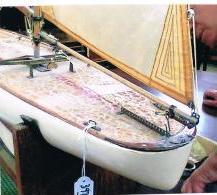
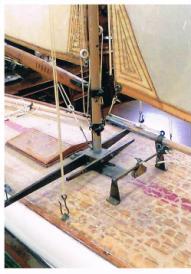
The photo below is of the radical new design which won the latest Mini Transat race across the Atlantic in a record time and by a record margin from the 2nd place boat - It appears that model yachting was 70 years ahead of the game with the Gemima Duck design. Although this design's strongest point is for reaching, it may not be too long before we see it showing up on other yachts that are designed for a box rule???

3rd January 2012 - We took a group of friends out yesterday to watch The King of the Derwent yacht race and to see the incredible power and beauty of "Wild Oats XI" up close. To hear the awesome noise of the rig groaning on the tack at the top mark and to see the speed of this 100 footer was truly amazing, as it virtually lapped the fleet. Wild Oats tacks downwind like a catamaran, as its hull speed exceeds the wind speed.
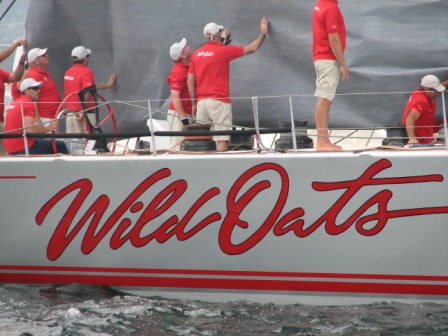
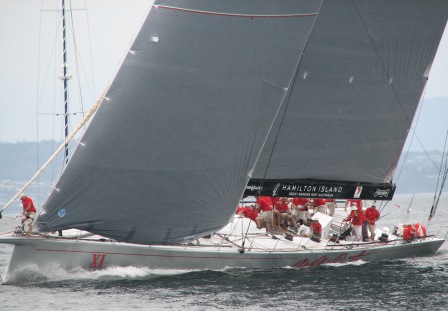
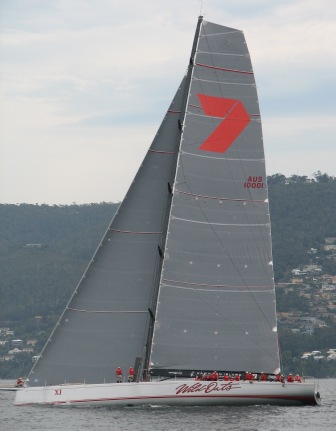
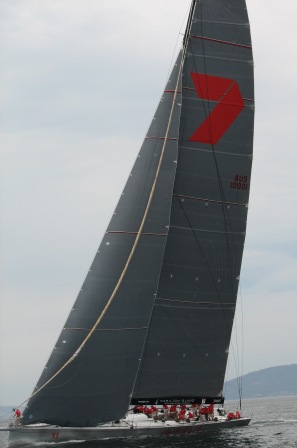
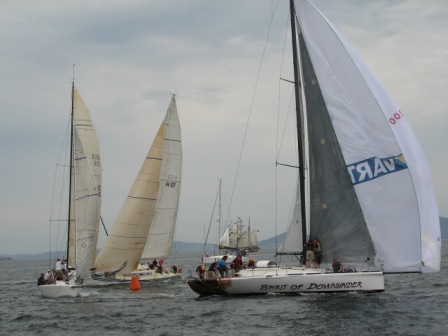
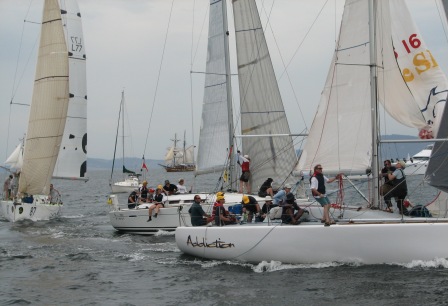
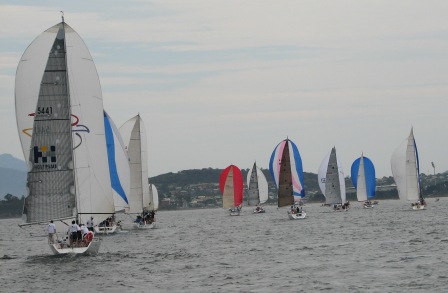
16th December 2011 - We had an incredible week in Port Arthur that turned into 10 days. Cassie caught plenty of flathead and calamari squid, which together with beef, vegetables and fruits given to us by friends in the area, meant we were virtually self sufficient. We had family and friends to visit and a car for sight seeing, but with Christmas fast approaching, we pulled anchor and sailed out of the port and around the incredible rock formations of Cape Raoul, and across Storm Bay to the Derwent River. We had a great sail up the Derwent to our marina berth and are now looking forward to Christmas and New Year celebrations in Hobart.
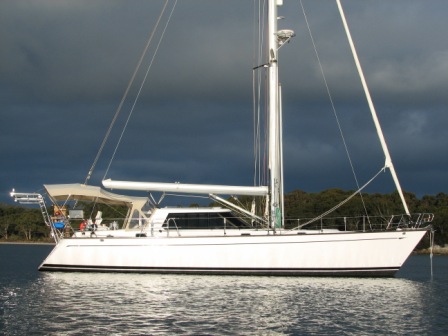
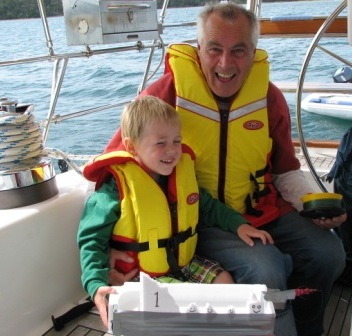
Seaca anchored in Port Arthur Making first model boat with grandson Ryan
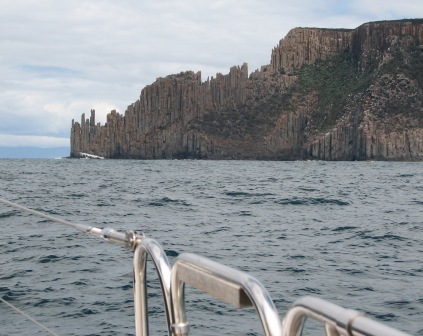
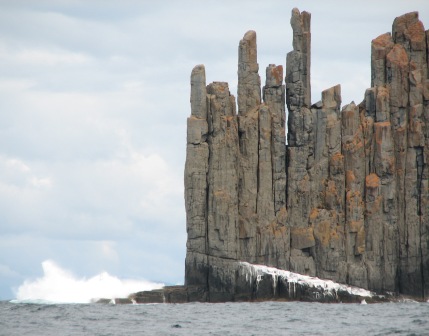
Approaching Cape Raoul "The Raoul" up close
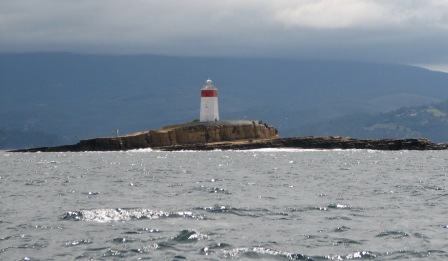
The Iron Pot lighthouse at the mouth of the Derwent River
5th December 2011 - After a great trip down the wild and spectacular coastline of the Tasman Peninsula, including an up close encounter with a family of whales, we spent the weekend huddled in Fortescue Bay while a cold and vigorous weather system passed over us. This morning we left and headed south across Monroe Bite to Tasman Island and had at least a hundred dolphins as escort all the way. We passed between Tasman Island and the towering cliffs of the mainland, and had a bumpy ride from there to Port Arthur. We are anchored off the Port Arthur Historic Site and Cassie has already caught up with packing all the orders for dispatch tomorrow. We will spend the rest of the week here as the forecast is for great weather, and we have friends to visit in the area.

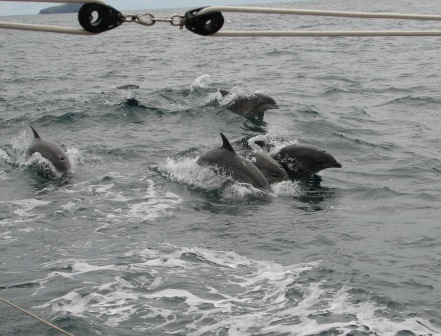
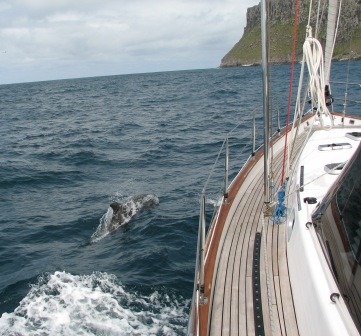
Anchored behind old wreck in Fortescue Dolphins in Munroe Bite Dolphin escort to Tasman Island


Our anchorage off the Port Arthur Historic Site Happy Wanderers...........
2nd December 2011 - After a busy week in Triabunna catching up with all the orders and family and friends, we are now sailing down the Mercury Passage between Maria Island and Orford, bound for Fortescue Bay on the rugged coastline of the Tasman Peninsula. We will be out of range until we arrive in Port Arthur around Monday/Tuesday. Weather is perfect today, with blue skies and a 15+ knot nor easter pushing us along at 8 knots.


Near where Tasman anchored and landed in 1642 AD The Lanterns - at the entrance to Fortescue Bay
26th November 2011 - After a perfect run across Bass Straight, with 15 to 20 knot nor easterly winds allowing us to sail at 8 knots for most of the way, we arrived in Triabunna, a great little fishing town on the east coast of Tasmania, at 7 am this morning. We covered over 400 miles in about 52 hours.
With pods of whales and schools of dolphins to entertain us, as well as abundant bird life and amazing sunsets, the long wait in Eden proved to be worth it.
Time to rest..........

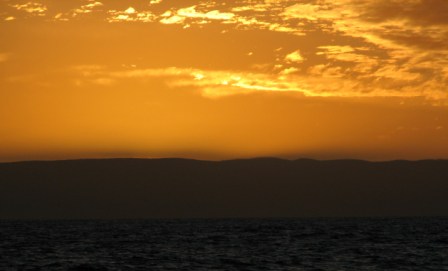
Cassie took this pic just south of Gabo Island Sunset over St. Helens, Tasmania
24th November 2011 - 6am - We left Eden this morning at 2 am and are now just off Gabo Island, which is the south east corner of mainland Australia. We are entering Bass Straight in a 12 knot South Easterly, which is forecast to go Easterly then Nor Easterly this evening. We will be out of range for the next 48 hours and are looking forward to a pleasant crossing.



Cassie on watch One reef in the mainsail Denis watching the wrong way........
20th November 2011 - With another gale warning issued for the Bass Straight this afternoon, (30 to 40 knot south westerlies) we continue to enjoy our time snugged up in Eden. The weather charts show a high pressure system moving across the Great Australian Bite, and we are optimistic we will get a good weather window around Thursday. We visited the Eden Killer Whale Museum yesterday and reacquainted ourselves with the fascinating true story of Old Tom the killer whale:
"On the South Coast of NSW near the port of Eden, shore-based whale hunting was a thriving industry in the late 19th and early 20th centuries. Whalers hunted baleen whales (mostly humpback and southern right whales) for their blubber and bones as well as their baleen which was used in the manufacture of women’s clothes. A group of killer whales in this area was known for its cooperation with human whalers in hunting other species.
The killer whales' partnership with humans lasted from the 1840s until 1930.The killer whale pod was led by a large male with a distinctive dorsal fin called Old Tom. The killer whale pod would intercept baleen whales on their migration journey and then, working as a team, would shepherd them into Twofold Bay. Once the whale was contained within the bay, the orcas would alert the whalers by breaching or tail slapping at the mouth of the Kiah River, just outside the whalers' cottages. Whalers then launched their wooden hulled rowing boats and rowed to where Old Tom and his pod held the whale entrapped. Following the harpooning of the baleen whale, the killer whales sometimes grabbed the ropes that attached the harpoon to the boat in their teeth and helped to haul the dead baleen whale to shore. The wear marks made by the rope can still be seen in the teeth of the skeleton of Old Tom, which is on display at the Eden Killer Whale Museum.
In return for their help, the killer whales were fed the tongue and lips of the baleen whales (a favourite part of their diet). Many of the Eden killer whales were individually named. There was Old Tom, Hooky, Humpy (died 1927), Cooper, Typee (died 1901), Jackson, Stranger, Big Ben, Young Ben, Skinner and Montague. By 1930, shore-based and offshore whaling had reduced humpback stocks significantly. This resulted in a reduction in the number of orcas in Old Tom’s group. On 17th September 1930 the old whale returned to its favoured hunting area to die. Upon finding the body of Old Tom in the water, local whalers decided to preserve the skeleton. The killer whale-human partnership lasted for almost 90 years. It is a unique example of whales and humans working together."
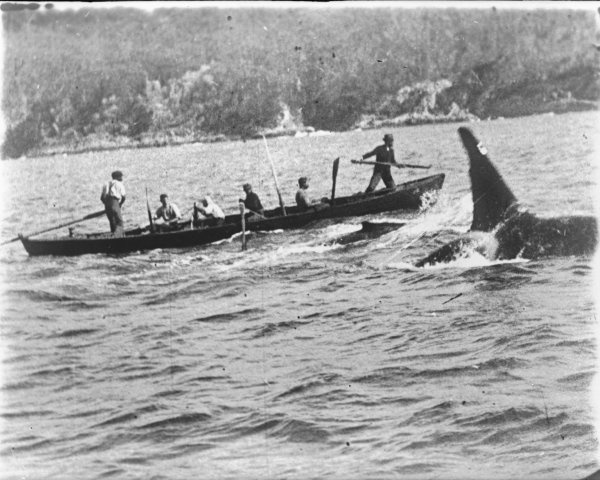
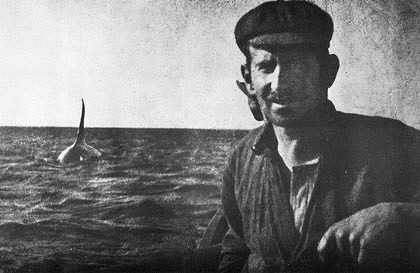
Old Tom herding a whale for the whalers Old Tom photographed with unnamed whaler in Eden 1908
16th November 2011 - A 30 knot southerly change that was forecast for Eden at dawn this morning, swept through at 3 am, so we had to quickly get up and move off the wharf, before the waves built up. We moved over to a southern bay and rode out the gale on anchor. With no let up in the cold fronts moving through Bass Straight, we may be here for another 5 to 7 days. With orders to fill and send, and the friendliness of the locals, we will continue to patiently wait. Cassie caught 3 flathead whilst we were on anchor today, and we have just had them for dinner.
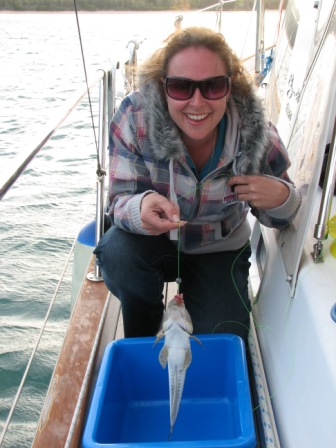

Cassies catch Boat moored astern of us
13th November 2011 - We have had a pleasant weekend in Eden, and are lucky to have one of the best fish and chips shops I have encountered, nearby - We have been filling orders and taking walks around the headland which has abundant birdlife and brilliant views out across the ocean. We are keeping an eye on the weather charts, but nothing promising for the next few days. We will just enjoy our time here. It is 10pm and it is raining with distant thunder and lightning.
10th November 2011 - Dusk - Our neighbour in the anchorage, Dougie, has completely restored this Swanson 42. He has outfitted the yacht with all the right clobber, to make it a perfect cruising yacht. The Swanson 42 is an absolute classic from the board of Ron Swanson, and is part of a series of double ended cruising yachts he designed and built. They were built in 28, 38 & 42 foot versions and over 100 were produced. They are a strong fibreglass build with a very sea kindly hull. Ron Swanson was a legend of Australian sailing and his designs won many Admirals Cup races and Sydney-Hobarts.
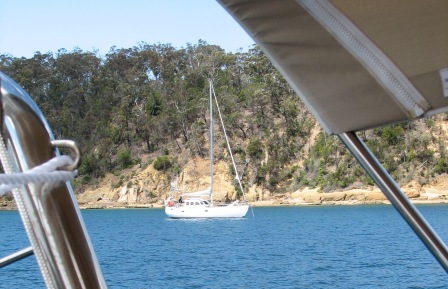
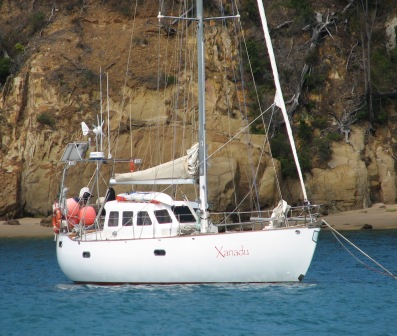
10th November 2011 - As I write this, we have a 30 knot sou'wester blowing with heavy rain, thunder and lighting thrown in. After spending a couple of pleasant days at the Eden wharf catching up on orders and doing minor boat jobs, we moved across the bay early this morning, and anchored in a safe refuge, in anticipation of this blow coming. It does not pay to be tied up to Eden wharf in strong winds from the south, as the waves build quickly and it is easy to sustain damage in a short time. Even though you need to be on constant alert, and be ready to move at any time, I prefer to be here than in a sterile floating marina environment. With a line of cold fronts marching across the Great Australian Bite, we look like we will be in Eden for sometime to come, as the Bass Straight is no place to be in inclement weather, and we will patiently wait until we get a good 40 hour weather window.
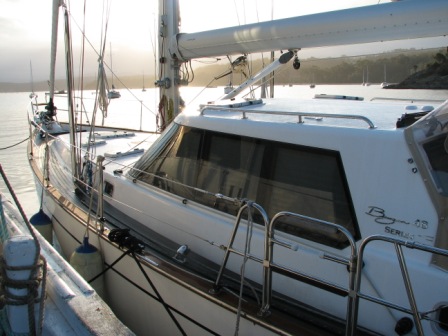
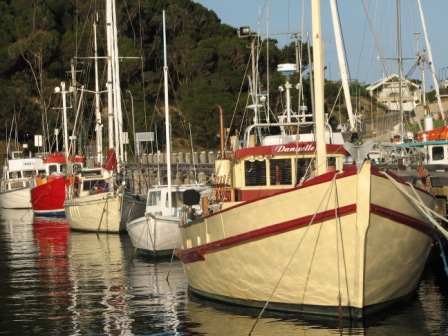
Seaca rafted up to a fishing boat at Eden Wharf View astern
November 7th 2011 - Arrived Eden 3.30am - Anchored - Off to bed.............
10 hours later after a great sleep, we have woken to a sunny day in Eden. We raised anchor and moved into the mooring wharf, where we are busy packing orders for dispatch tomorrow. Eden is a remarkable place with lots of maritime history and full of real characters, and is the last port down the New South Wales Coast, and the jumping off point for crossing the Bass Straight. We will wait here for the next weather window that is favourable for crossing "the paddock". We copped 20+ knot headwinds for the last 40 miles to Eden last night with a strong wind warning issued predicting up 30knot southerlies, but the boat handled it well and we got into port before the seas built up too much. We spent almost 3 days and 3 nights at sea and covered 450 nautical miles, with the boat proving impressive in all conditions. Cassie took the photos below of the coastline near Coffs Harbour and a sunrise in the Stockton Bight.
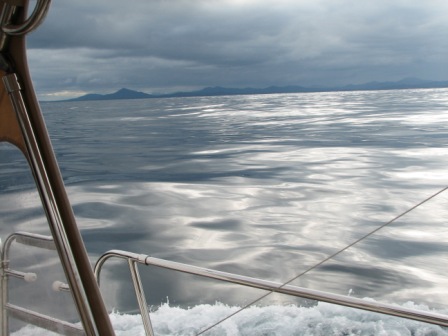
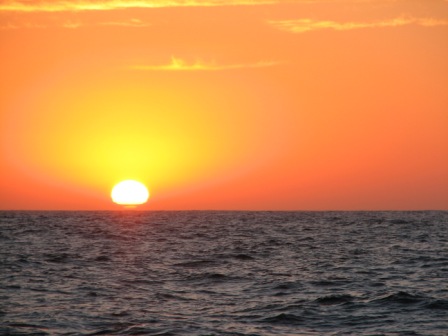
November 6th 2011 (Dawn) - When the weather gods give you a gift, it is often best to grab it with both hands. - With continuing northerlies down the east coast of New South Wales, we decided to cut across Stockton Bight to Jervis Bay. It is about 6am and we have just arrived at our waypoint off Jervis Bay, and with a continuing northerly forecast for today, we have decided to push on to Eden, which we should reach about midnight tonight. Yesterday we had fresh northerlies which had us sailing at 8+ knots, which continued into the night. We hit something in the water about 10pm last night (I suspect a whale) so I turned on the engine to act as a warning signal and reduced sail a bit to settle the boat down, so we could get some rest. Cassie and I are a bit sleep deprived, but will catch up on some zeds today. - We are now motoring along in calm conditions, with sunny skies and masses of Mutton Birds (Short Tailed Shearwater) returning from their annual migration to the Arctic Circle. These birds travel about 15,000 kilometres in each direction annually. They have been known to fly this remarkable distance in six weeks. About 18 million mutton birds return to Tasmania annually and historically have been harvested by the Tasmanian Aboriginals, as they are a great delicacy. I also have just seen an Albatross, which is a sign we have come a long way south.
November 5th 2011 (Dawn) - After a couple of pleasant days in Coffs Harbour and having caught up on orders, we decided to take advantage of a calm spell before the forecast nor easter and left Coffs at 3.30pm Friday. We motorsailed through the night with a light easterly breeze giving way to a very light south wester around midnight. Cassie and I alternated on 4 hour watches and have had a pleasant and uneventful passage overnight with only a couple of other boats seen all night. We are approaching Seal Rocks and should be off Port Stephens around midday. We will review the weather forecast then, but will probably push on to Sydney or beyond, as a 15 to 20 knot north easterly is expected. We saw the ketch/yawl below in Coffs - She is built of Huon Pine and was commissioned by the Tasmanian Government in 1928 as the Government Cutter in Bass Straight. It was manned by police for patrolling the Bass Straight and had a large sail area which enabled her to have plenty of speed to catch poachers. Her appointments below deck were of the highest standard and suitable for the Tasmanian Governor and Cabinet Ministers who often used her for visits and inspections around the Bass Straight Islands. Originally named Allara, her name is now Aralla and the current owners have a big job ahead.
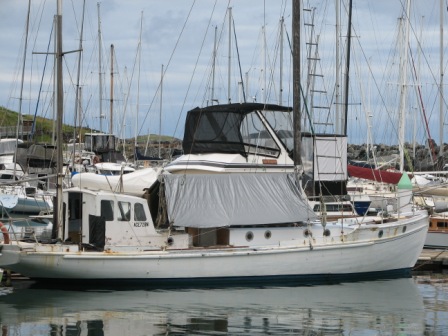
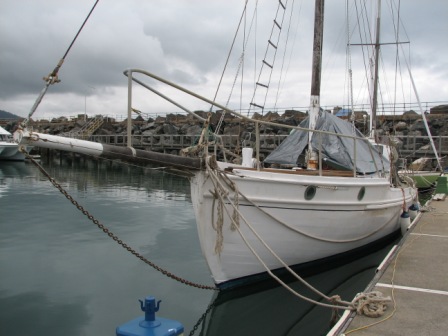
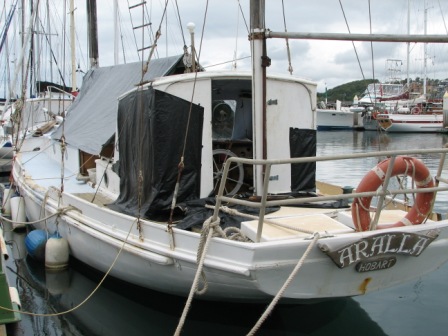

November 3rd 2011 - Having sent all the orders, we had a fun day watching the Melbourne Cup with our good friends Andrew and Joan Watson in Yamba. We departed Yamba at 11 am on Wednesday 2nd Nov and had a glorious sail to Coffs Harbour in a 12 to 15 knot Nor Easter. We saw multiple pods of whales and dolphins on the way, with some spectacular jumping and tail displays as we neared the Solitary Islands. We arrived at Coffs Harbour at dusk, to find the marina full, so we tied up to the fuel berth for the night, and topped the tanks up this morning. Whilst in Yamba, we saw the Nicholson 35 below, which was fully restored and in perfect condition. Built in the 1970s and 80's by Camper and Nicholson UK, these are a classic boat from the early days of fibre glass production boat building. I was humbled to meet the owners, who were in their 70's and were on their second circumnavigation of the world.
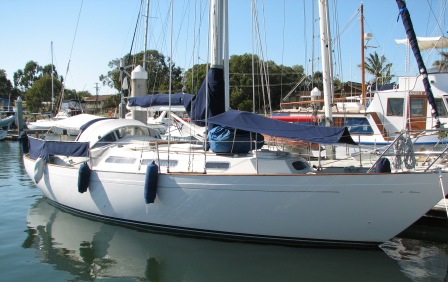
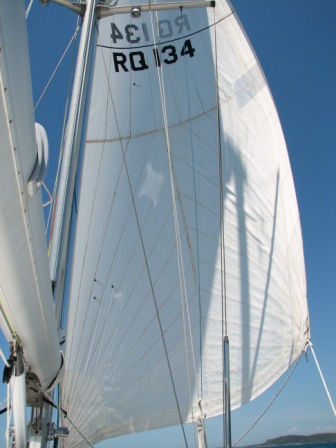
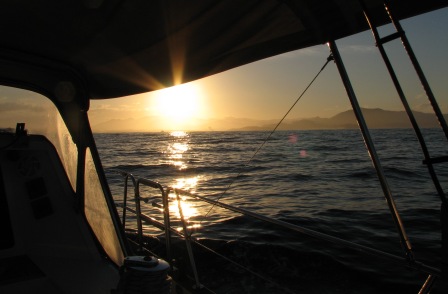
November 1st 2011 - With a perfect forecast to travel south, we threw away the "to do" list and departed the Gold Coast on Saturday afternoon for an overnight passage to Yamba, New South Wales. With a 15 knot Northerly we had a great sail, passing the Byron Bay lighthouse at midnight and arrived into Yamba early on Sunday morning to a display by a humpback whale. The whales are migrating back to the Antarctic for summer at this time. We have caught up on all the orders, and will travel to Coffs Harbour when the next weather window appears - Yamba is a beautiful coastal town on the north coast of NSW, with fishing and surfing as its main attractions.
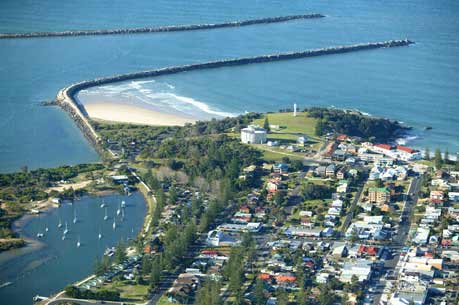
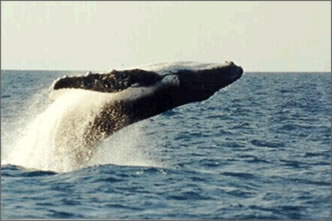

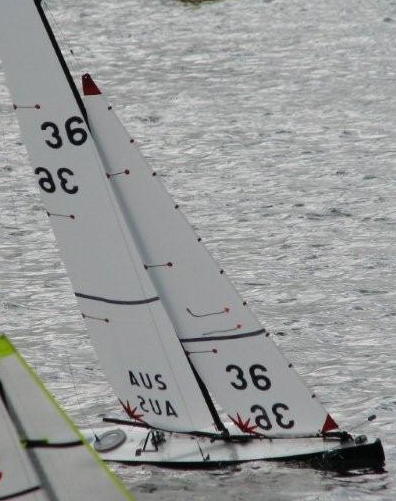











 Dennis sailing an 18 footer in Sydney in the 1970"s Sevie, Woody & Howie having a blast today
Dennis sailing an 18 footer in Sydney in the 1970"s Sevie, Woody & Howie having a blast today


 JB's DREADNOUGHT 2012 HMS DREADNOUGHT 1906
JB's DREADNOUGHT 2012 HMS DREADNOUGHT 1906





 This is a planked Marblehead from 1949, named “Niad”.. Thought to have been made in Australia by Steve Daniels. The sweet lines of this yacht are reminicent of early Sparkman & Stephens designs - Note vane gear.
This is a planked Marblehead from 1949, named “Niad”.. Thought to have been made in Australia by Steve Daniels. The sweet lines of this yacht are reminicent of early Sparkman & Stephens designs - Note vane gear.
















































